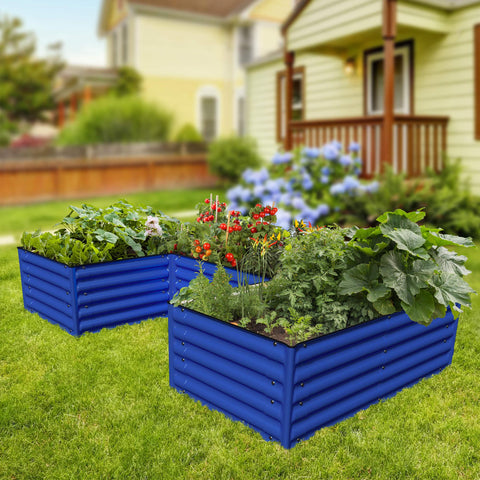Knowledge From Olle Garden Bed: Seven Tips For Planting Pollinator Gardens
From bees to butterflies, pollinators in some places face the risk of losing their habitat due to agriculture, resource exploitation and urban development. Fortunately, you have an interesting and low-maintenance opportunity to help alleviate this problem: planting a pollinator garden! These gardens have a positive impact on the ecosystem and insects around you, because they become safe havens and provide food and shelter for pollinators, who in turn will help you eat plants. This content also has some reference value for Olle Garden Beds.
If you like to make a difference, please learn these seven skills to help develop your pollinator paradise!
1.Select local species
Working with your environment, not against it, is the key to a thriving pollination media garden. The most important part of the pollination media garden is the plant you choose. Planting native species in your area will help attract native pollinators in the area. For example, people living in desert climates are more dependent on bat pollination than people living in cold regions.
Local species reduce or eliminate the need for pesticides or fertilizers. They do so because they are naturally suitable for local and regional conditions (such as the availability of soil and water) and often have the ability to resist native pests in the region. Native species may also be the only food source for some insects, providing specific nutrients at key points in their life cycle. The co-evolution of native plant and insect species has created a balanced ecosystem.
2.Planting varieties
Some insects are versatile pollinators, which means they can visit many different plant species. In contrast, professional insects can only feed on a few insects. Selecting pollen of different sizes and shapes and plants rich in nectar can make the garden attract a variety of insects.
The shape of flowers is very important. Some pollinators, such as hummingbirds, may never fall on flowers, but others, such as butterflies, will. Consider the shape of flowers to help insects that may need landing pads. For example, milkweed is an attractive plant for bees and butterflies, while hummingbirds like foxglove and lark.
3. Agglomeration
Planting plants in large clumps is one of the best practices of pollination media gardens. Large color display helps pollinators find flowers and provide more pollen and nectar, thus achieving effective pollination. Consider planting at least three varieties to produce the desired effect.
4. Restriction of pesticide use
The purpose of chemicals in pesticides is to protect plants from harmful insects; However, they may also be harmful to beneficial insects such as pollinators.
Consider using environmentally friendly alternatives to pesticides, such as soap and water. If this is not an option, please read the label of any pesticide and consider the ingredients before use. Highly toxic ingredients, such as neonicotine, will pollute nectar, pollen and pollination media.
Some pesticides contain chemicals that can contaminate the food source of pollinators. When used to eliminate unwanted plants, they can reduce the habitat of pollinators. In turn, this has led to the imbalance of the local ecosystem. Before selecting pesticides for your pollinator garden, please consider alternatives!
5. Change flowering time
Different varieties of plants are beneficial to their appearance, and different species also have flowers with different flowering times. Although some pollination media are active in the early spring, other pollination media are not active until the late season. Different flowering times create a feast for various pollination media from spring to autumn. Use the buffet to attract those pollinators!
6. Garden cleaning in spring
If you want to help pollinators get nectar and pollen, please consider cleaning your garden until spring. All the plants in the garden that are usually pruned in autumn, such as dead flower stems, grass, and even fallen leaves, become the homes of pollinators at different life stages.
Vegetations such as leaf beds or hollow stems contain eggs, larvae, pupae and adult pollinators and protect them throughout the winter. For example, bees socialize in their hives. Although they are important pollinators, bees are not native to North America. Many bees native to the region are lonely and need hollow logs or dead flower stems to settle down.
7.Water supply
Another way to attract pollinators to the garden is to provide water! Although the bird bath is very suitable for pollinating birds such as hummingbirds, it may not be easy for smaller insects to enter. Consider adding large stones in the bird bath to allow insects to land and take water. Other water sources can include ponds, fountains and even puddles.
Adding water will help make your pollinator garden a one-stop shop!
Have some achievement!
Pollination media are an important part of the local ecosystem. Planting pollinator gardens is a good way to help them keep healthy and prosperous! Using local plant species and growing in groups are some small things you can do to create a thriving pollination station.


